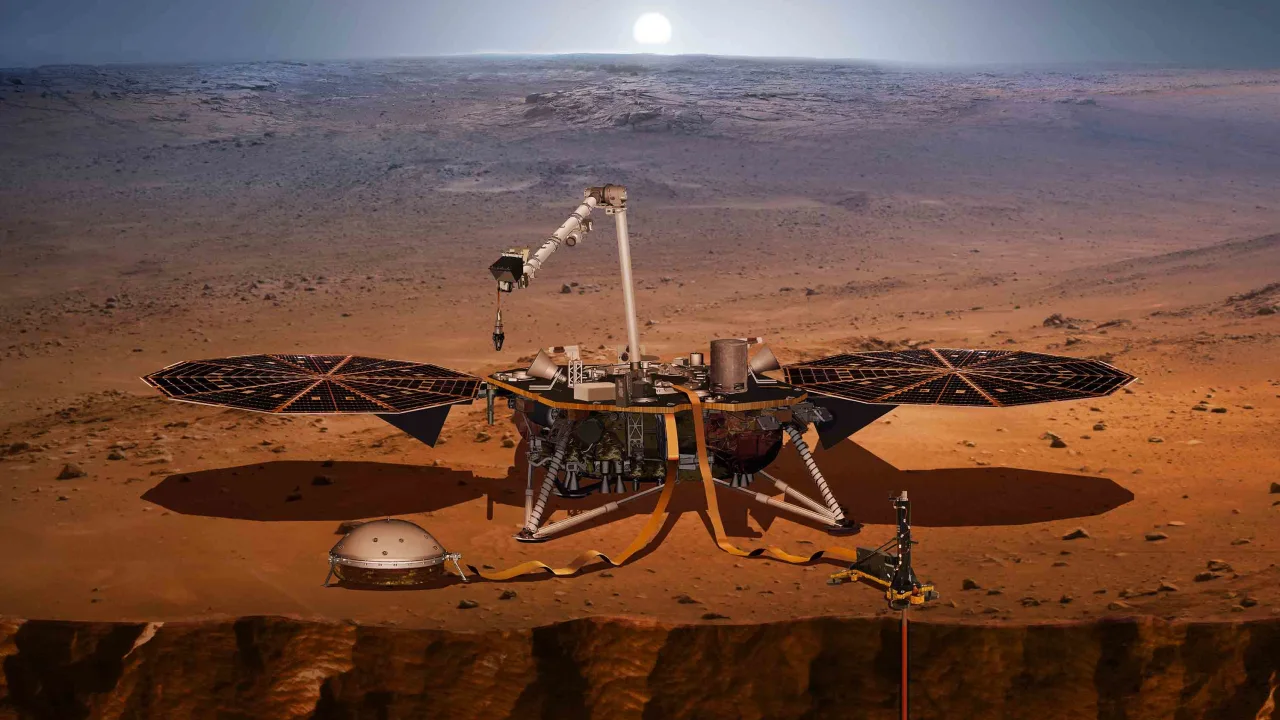Mars is rotating more quickly, NASA mission finds
by Admin

Mars is rotating more quickly than it used to, according to data that NASA’s InSight lander collected on the red planet.
The now-retired InSight was armed with a suite of instruments, including antennae and a radio transponder called RISE, or the Rotation and Interior Structure Experiment. The instruments were used to track Mars’ rotation during the mission’s first 900 days on the planet.
Astronomers determined that the planet’s spin is increasing by about 4 milliarcseconds per year², or shortening the length of a Martian day by a fraction of a millisecond per year. A Martian day lasts about 40 minutes longer than a day on Earth.
The findings, based on an analysis of InSight data shared before the mission ran out of power and retired, were reported in a June study published in the journal Nature.
Initially, the InSight mission, the first to study the interior of Mars, was supposed to last about two years after it landed in November 2018. But NASA extended the mission for another two years.
The InSight mission continued to collect data about Mars until the very end, falling silent in December 2022 after dust blocked its solar panels from receiving sunlight.
InSight benefited from relying on advances in radio technology that were a vast improvement on what the Viking landers in the 1970s and Pathfinder in the 1990s carried. Upgrades to the Deep Space Network, or the massive antennas placed at three strategic points on Earth that relay info from space missions, also enhanced the accuracy of the data captured by InSight and sent back to Earth.
Scientists used the Deep Space Network to beam signals to RISE on InSight, which then reflected the signal back to Earth. These relayed signals helped researchers track small frequency changes caused by the Doppler shift, which is what causes sirens to change in pitch depending on their distance. The frequency changes correlated with the planet’s rotation.
“What we’re looking for are variations that are just a few tens of centimeters over the course of a Martian year,” said lead study author Sebastien Le Maistre, RISE’s principal investigator at the Royal Observatory of Belgium, in a statement. “It takes a very long time and a lot of data to accumulate before we can even see these variations.”
Mars is rotating more quickly than it used to, according to data that NASA’s InSight lander collected on the red planet. The now-retired InSight was armed with a suite of instruments, including antennae and a radio transponder called RISE, or the Rotation and Interior Structure Experiment. The instruments were used to track Mars’ rotation during…
Recent Posts
- Liverpool ends 15-year curse with statement win over Real Madrid
- The TSA-approved hack that allows travelers to bring a bottle of water through airport security
- Подводный WiFi, аквапонные фермы: как морские техностартапы привлекают инвесторов
- “Подводный интернет”: эта женщина может подключить беспроводную сеть на 3-километровой глубине
- Inside the wild world of Osaka’s dangerous, adrenaline-fueled float festivals